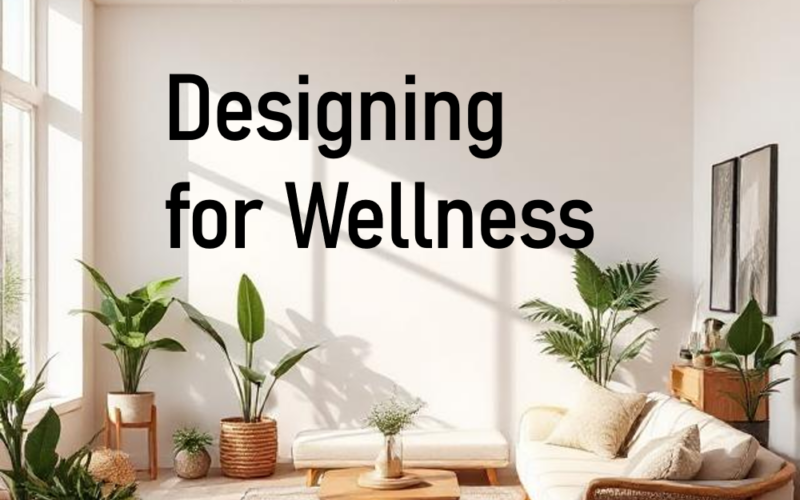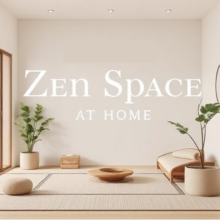The Psychology of Space & Style: How Our Environments Shape Our Minds

Introduction
Have you ever walked into a room and instantly felt at ease, or conversely, experienced an inexplicable sense of discomfort in a particular space? The environments we occupy have a profound psychological impact on our thoughts, emotions, and behaviors. Whether it’s the layout of a home, the design of a workspace, or the aesthetics of a retail store, the way spaces are structured and styled plays a crucial role in shaping human experiences.
In this article, we will explore the psychology of space and style, delving into how spatial design and aesthetics influence mood, productivity, decision-making, and overall well-being. We will examine key psychological principles, real-world applications, and emerging trends in the field.
The Science Behind Space & Style
1. Spatial Perception and Human Behavior
Humans interact with their surroundings using a combination of cognitive processing, sensory perception, and emotional response. Our brains interpret spatial arrangements in ways that directly affect our comfort, stress levels, and decision-making abilities. For example:
- Open spaces tend to evoke feelings of freedom and relaxation, while confined spaces may cause discomfort or anxiety.
- High ceilings promote abstract thinking and creativity, while lower ceilings encourage focused, detail-oriented tasks.
- Organized environments reduce cognitive overload, allowing for greater efficiency and clarity of thought.
2. The Psychological Effects of Space on Mood
Research in environmental psychology suggests that our environments influence our mood significantly. Factors such as lighting, color, layout, and furniture arrangement can all elicit emotional responses:
- Natural light enhances productivity, alertness, and overall happiness by regulating circadian rhythms.
- Dark or cluttered spaces may lead to feelings of stress, fatigue, or even depression.
- Biophilic design (incorporating natural elements like plants, wood, and water features) is known to reduce stress and improve mental well-being.
How Space Affects Human Psychology
1. Minimalism vs. Clutter: The Cognitive Load Factor
Minimalist spaces—characterized by simplicity and open areas—allow the mind to focus and relax. Clutter, on the other hand, bombards the brain with excessive stimuli, making it harder to concentrate and increasing mental fatigue.
2. Open vs. Closed Layouts: Social & Psychological Implications
- Open-plan offices encourage collaboration but may reduce focus due to noise and distractions.
- Private, enclosed spaces offer psychological safety and better concentration but may limit creative interaction.
- Hybrid workspaces are becoming popular, allowing flexibility between solitude and social engagement.
3. The Power of Personalization
Giving individuals the ability to personalize their environment (e.g., choosing their desk setup, adding personal decor) has been shown to boost job satisfaction, creativity, and emotional attachment to the space.
The Role of Style in Human Experience
1. Aesthetic Appeal and Emotional Responses
The concept of aesthetic psychology explores how design elements—such as color, texture, and symmetry—affect emotional states. For instance:
- Cool colors (blue, green) evoke calmness and tranquility.
- Warm colors (red, orange) increase energy levels and excitement.
- Balanced symmetry is associated with harmony, while asymmetry can create a dynamic and engaging environment.
2. Cultural Influences on Style
Different cultures have unique spatial and stylistic preferences that reflect their traditions, values, and ways of life.
- Japanese interiors emphasize minimalism and natural elements, fostering a sense of Zen and mindfulness.
- Mediterranean designs use warm tones and intricate patterns to promote hospitality and vibrancy.
- Scandinavian styles focus on simplicity, function, and warmth to create a feeling of comfort and practicality.
Neuroscience & Sensory Impact of Spaces
1. How Our Brain Processes Space
The human brain is wired to respond to spatial environments through a combination of sensory inputs and cognitive associations:
- The hippocampus (responsible for memory) is actively engaged when navigating a well-structured space.
- The amygdala (linked to emotions) reacts to color, lighting, and environmental stressors.
2. The Role of Sensory Design in Well-Being
A truly immersive environment goes beyond visual aesthetics to engage all senses:
- Sound: Soft acoustics or ambient nature sounds enhance relaxation.
- Touch: Smooth, natural textures promote comfort and warmth.
- Scent: Certain smells (lavender, citrus) can trigger positive emotions and mental clarity.
Real-World Applications & Case Studies
1. Architecture & Urban Planning
- Biophilic urban spaces in cities like Singapore incorporate green walls and rooftop gardens to improve air quality and mental well-being.
- Smart cities are using human-centered design to optimize mobility and accessibility.
2. Interior Design & Workspaces
- Google’s offices implement color psychology, open spaces, and relaxation zones to stimulate creativity and collaboration.
- Hospitals and wellness centers use soothing colors and natural elements to aid recovery and reduce anxiety.
3. Retail & Consumer Behavior
- Stores like Apple use minimalist, spacious layouts to encourage customer interaction and exploration.
- Luxury brands leverage soft lighting and high-end materials to create exclusivity and appeal.
The Future of Space & Style Psychology
1. The Rise of AI in Design
- AI-driven analytics can optimize store layouts, office arrangements, and even home staging based on human behavioral data.
- Smart homes are incorporating adaptive lighting and AI-assisted ambiance control to enhance well-being.
2. Virtual & Augmented Reality in Spatial Design
- VR in architecture allows clients to experience spaces before they’re built.
- Augmented reality (AR) enables real-time customization of interiors, influencing consumer choices.
3. Sustainable & Eco-Conscious Spaces
- Future designs will integrate sustainability and ethical sourcing, focusing on long-term psychological benefits of eco-friendly environments.
Conclusion
The psychology of space and style is a powerful force that shapes how we think, feel, and interact with our surroundings. Whether in architecture, interior design, urban planning, or personal spaces, understanding the impact of space and style allows us to create environments that promote well-being, productivity, and positive experiences.
As you reflect on your own spaces, consider how you can optimize your environment to enhance your mood, creativity, and overall happiness. Do you need a decluttered workspace to boost focus? Or perhaps a cozy, well-lit reading corner to relax and unwind? The choices you make can transform not just your space but also your mental and emotional well-being.
👉 Want to learn more about optimizing spaces for better living? Stay connected for future insights into the psychology of design!



